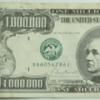I have been etching pint glasses that have curved sections in both the horizontal and vertical directions. This curving makes it difficult to effectively cover the glass with masking/transfer/application tape. It results in bubbles, gaps, folds and creases. When the etching laser passes of each of these, it usually produces a faint but noticeable irregularity in the etching. Applying longer masking pieces horizontally to wrap around the glass seems the worst. I tried doing multiple thinner vertical strips of masking but matching the seams is really difficult and I still get some gaps, folds and creases.
I have researched the archives here quite a bit yet didn't find much information in regard to techniques that could minimize these issues. Some posts said you have to tweak your settings more although I have not been able to find settings that can reproduce the sharpness and nice white frosting that masking provides. I would like to avoid the liquid masking products if possible.
Thanks in advance for tips and advice.




 Reply With Quote
Reply With Quote
 Most people probably would have been fine with the unmasked results. Unfortunately, now that I have seen the slight but noticeable improvement (especially the crisp small text), my perfectionist nature is getting in the way of being efficient for business (not selling any of these yet but trying to learn just in case an opportunity arises!).
Most people probably would have been fine with the unmasked results. Unfortunately, now that I have seen the slight but noticeable improvement (especially the crisp small text), my perfectionist nature is getting in the way of being efficient for business (not selling any of these yet but trying to learn just in case an opportunity arises!).

 - fiber lasers
- fiber lasers